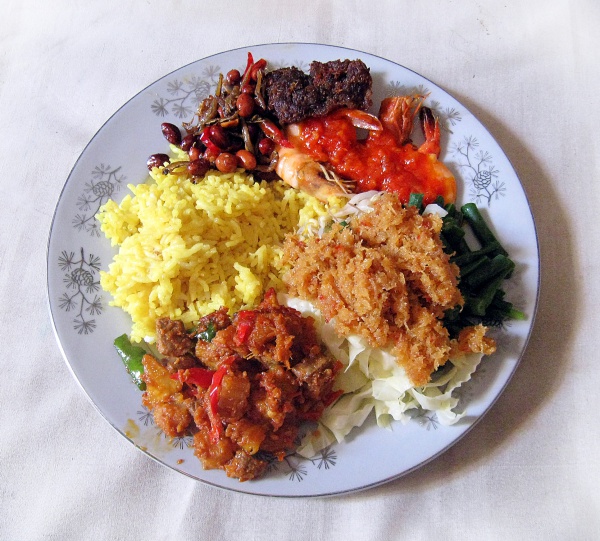Facts About Nasi kuning
Nasi kuning, also known as nasi kunyit, is a delightful Indonesian rice dish that stands out with its vibrant yellow color and fragrant aroma. This distinctive hue and scent are derived from cooking the rice with coconut milk and turmeric.
Interestingly, a similar dish exists in the Philippines, particularly among the Maranao people in Mindanao, called kuning. This version also uses turmeric and lemongrass but skips the coconut milk. Sri Lanka has its own interpretation, known as kaha buth, which blends elements of Indonesian and Sri Lankan culinary traditions.
In Indonesia, nasi kuning is more than just a flavorful meal; it holds deep cultural significance. It's often served during festive occasions as a symbol of good fortune, prosperity, wealth, and dignity, thanks to its golden appearance. This dish is popular throughout Indonesia, especially in Javanese and Minahasa traditions. Unique variations include the cone-shaped tumpeng in Java and the Manado version from North Sulawesi, which features skipjack tuna.
The magic of nasi kuning lies in its ingredients. The rice is cooked with turmeric, coconut milk, pandan leaves, lemongrass, and spices such as cinnamon and cloves. The result is a dish that is both flavorful and aromatic.
Nasi kuning is typically accompanied by a variety of side dishes. These may include shredded omelette, serundeng (toasted coconut flakes), urap (vegetables in grated coconut), teri kacang (anchovies with peanuts), sambal goreng (spicy fried dish), ayam goreng (fried chicken), balado udang (spicy shrimp), or perkedel (potato fritters). More elaborate versions might feature beef, seafood, or organ meats.
To complete the meal, nasi kuning is often served with kerupuk udang (shrimp crackers) or emping chips, along with fresh cucumber and tomato garnishes.

 Timor Leste
Timor Leste